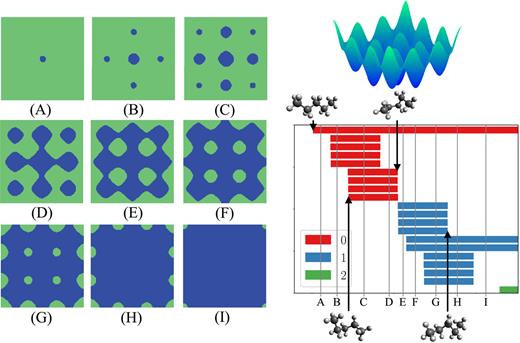ChemNetworks
A wide variety of chemical systems can be described through networks of intermolecular interactions. Our group has developed the ChemNetworks program to facilitate the creation of these networks and allow us to interpret these systems through the lens of graph theory. We have applied this methodology to a wide range of systems, including concentrated electrolytes, microemulsion, and interfacial systems.
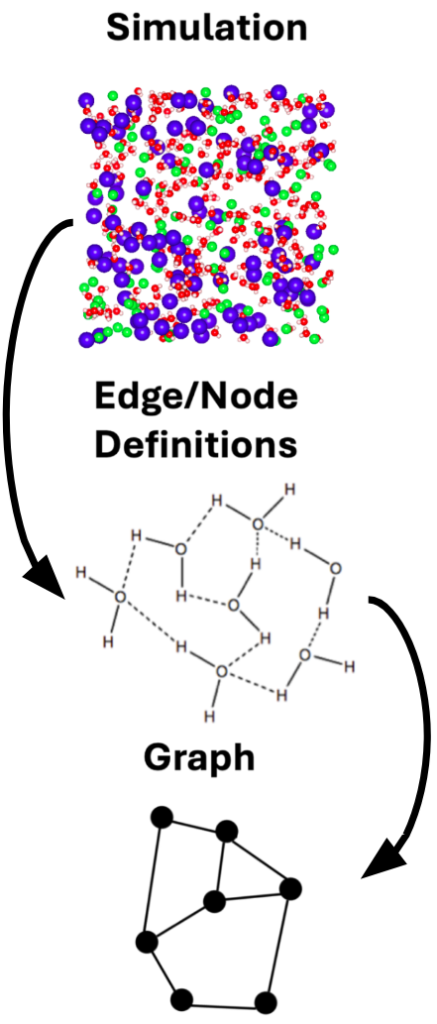
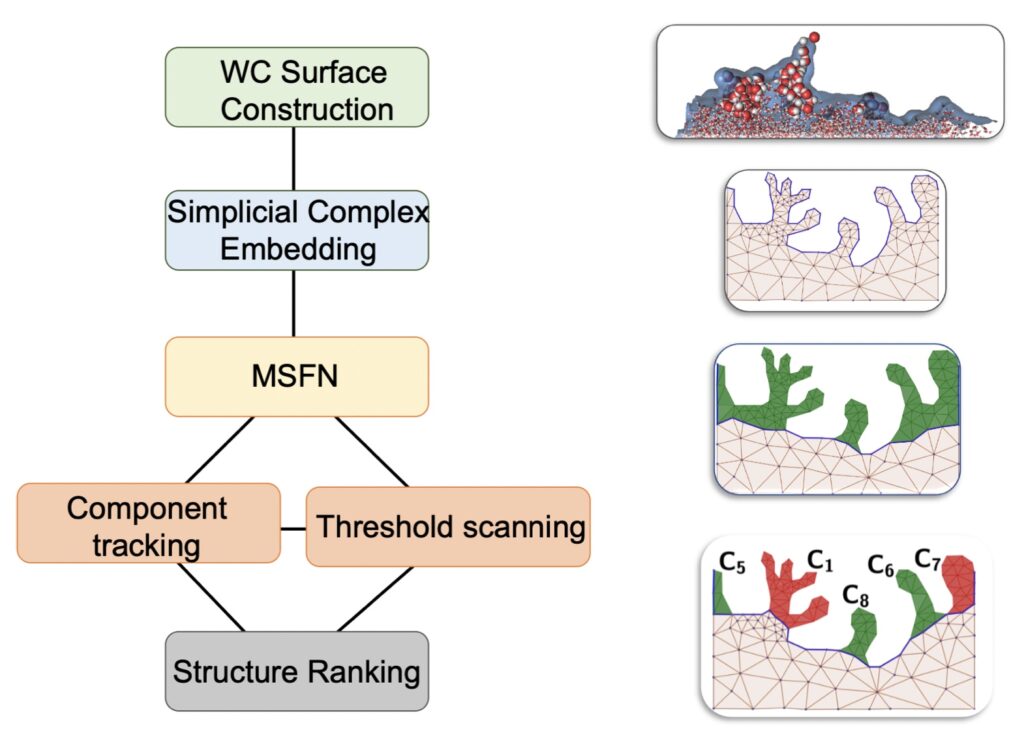
Flat Norm Algorithm
Structural features at the liquid-liquid interface, called protrusions, are directly linked to chemical reactivity and mass transport. As a result, we designed a systematic way of identifying these protrusions.
The Flat Norm algorithm employs concepts from geometric measure theory to label each feature with a given probability of being a protrusion.
Surface Geometry
To better understand the underlying features of the liquid interface, our group utilizes many techniques inspired by capillary wave theory and analytical geometry. We capture the geometric structures of the interface using the Willard Chandler surface algorithm (see left image) and use the Trimesh Python library to calculate the interface’s Gaussian curvature, surface orientation, and curvedness.
Using in-house code, we showed that adding surfactants to a liquid-air interface leads to an isotropic <–> anisotropic geometric transition of the interface. In addition, we showed that the adsorbed alkyl tails act to stabilize and increase the symmetry of the surface waves.
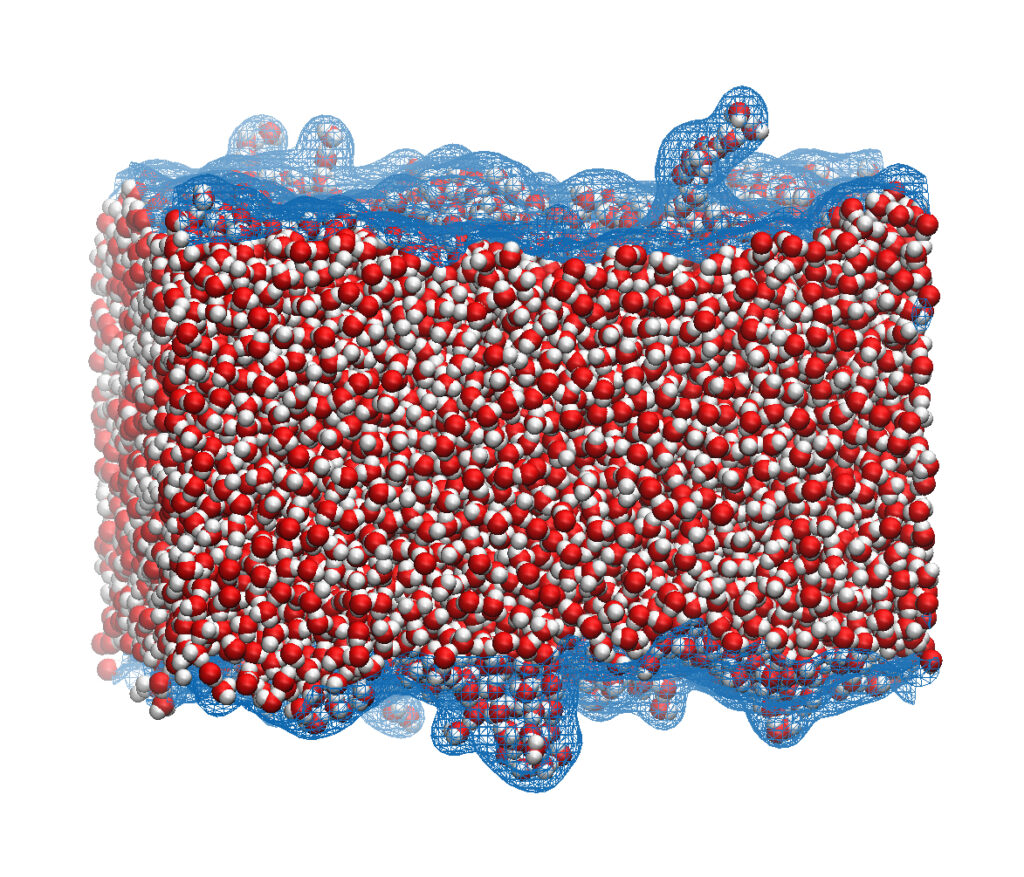
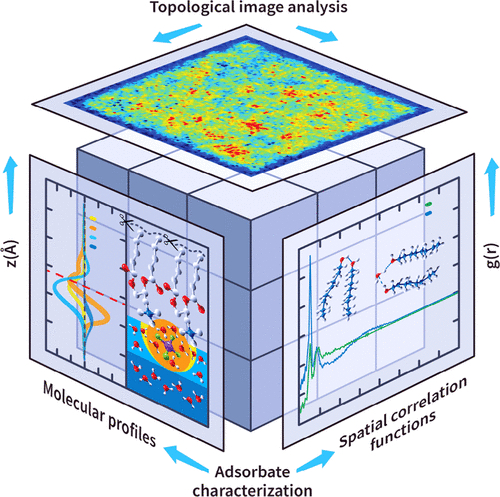
Persistent Homology Adsorbate Organization
Our group employs sublevel-set persistent homology to better understand liquid-liquid interfaces. We have studied the organization of adsorbates at the interface by studying how concentration changes the interfacial Betti numbers.
Our code takes advantage of adsorbate density images from molecular dynamics simulations and characterizes them using barcode representations of the images. This allowed us to differentiate between different reactive and nonreactive organization regimes.
Persistent Homology Energy Landscapes
Using sublevelset persistent homology, our group has developed a way to represent the high dimensionality of energy landscapes in a simple and easy-to-interpret graph. This method allows the complete characterization of the potential energy landscapes for alkanes rather than just capturing minima and maxima.
